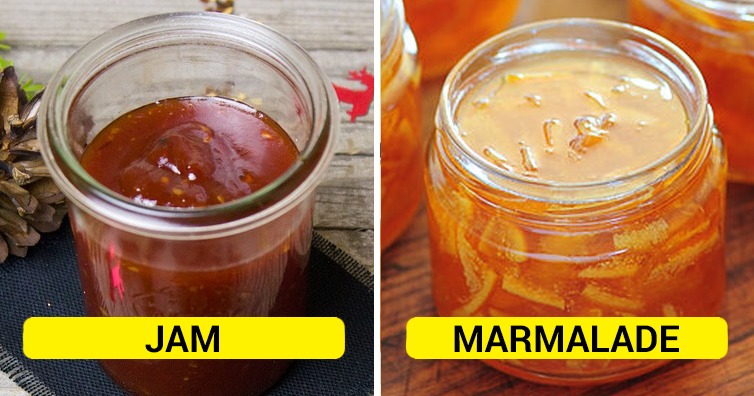The words ‘jam’ and ‘marmalade’ are used to describe fruit preserves suitable for long-term storage and, more often than not, the two words are used interchangeably. In fact, most languages don’t even have a separate word for these two jellied products.
In Spanish the word ‘mermelada’ is used for both jams and marmalades, in German both of them are called ‘marmelade’, in French ‘confiture’. Even in Greek (the language that spawned all previously mentioned languages), the word ‘μαρμελάδα’ is used for both of them.
However, even though most languages don’t even separate between jam and marmalades, there is a distinct difference between the two products. And it all has to do with what goes into the making: (the article continues after the ad)
JAM
Jam is always made from whole or cut fruits that are cooked with sugar and let to reduce until they produce a thick and fruity spread – but it’s only the pulp, not the rind. For instance, when making an orange jam, the peel is removed and only the pulp of the orange is used.
MARMALADE
On the other hand, marmalade is made by using both whole or cut fruits AND pieces of the peel. That is the reason why usually marmalades are made from citrus fruits such as oranges, lemons, kumquats, grapefruits and other citrus. The cooking method is basically the same even though it may take longer for a marmalade to be ready since the fruits are usually used in larger chunks.
No now you know!
If you like what you read, then you will definitely love this one: This Is The Difference Between a ‘President’ And A ‘Prime Minister’
Photo: Einladung_zum_Essen / Pixabay, jules / Flickr
Photoshop: I’m A Useless Info Junkie
Sources: What’s The Difference Between Jam, Jelly, Conserves, Marmalade, & Fruit Spreads? | The difference between a jelly, jam, marmalade and fruit butter | Know It All: What’s the Difference Between Jelly, Jam, Marmalade, Preserves, and Fruit Spread?



